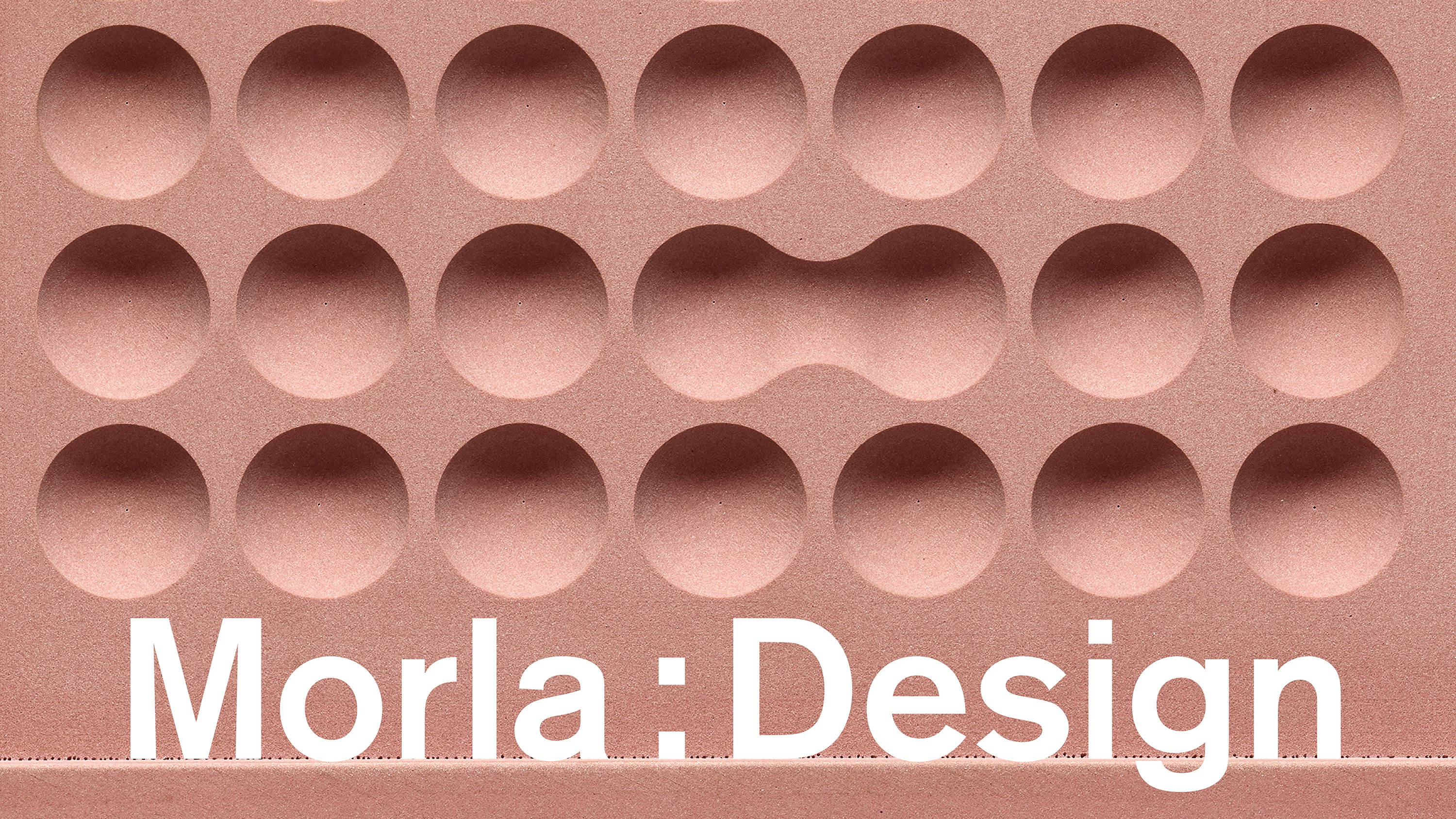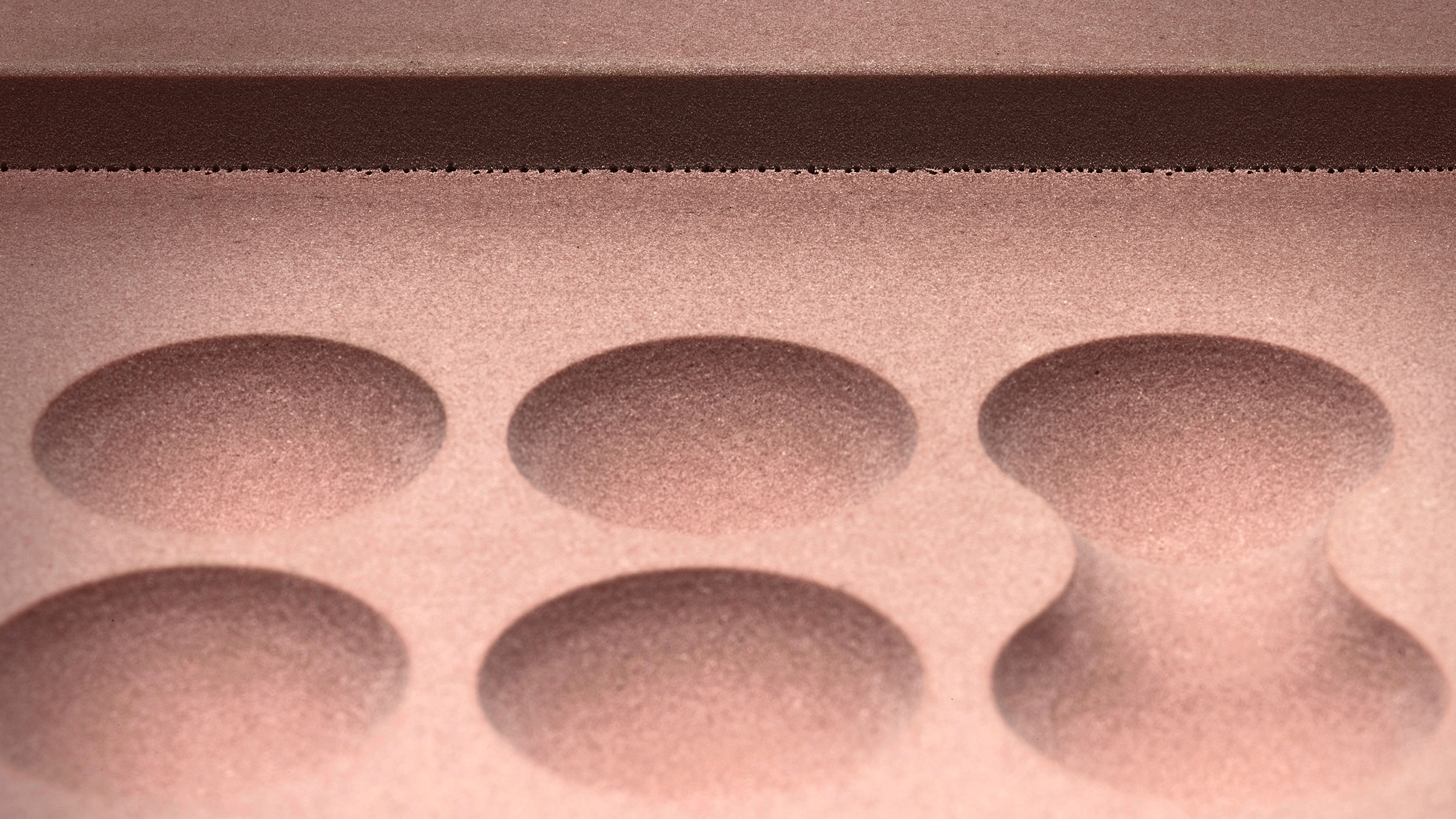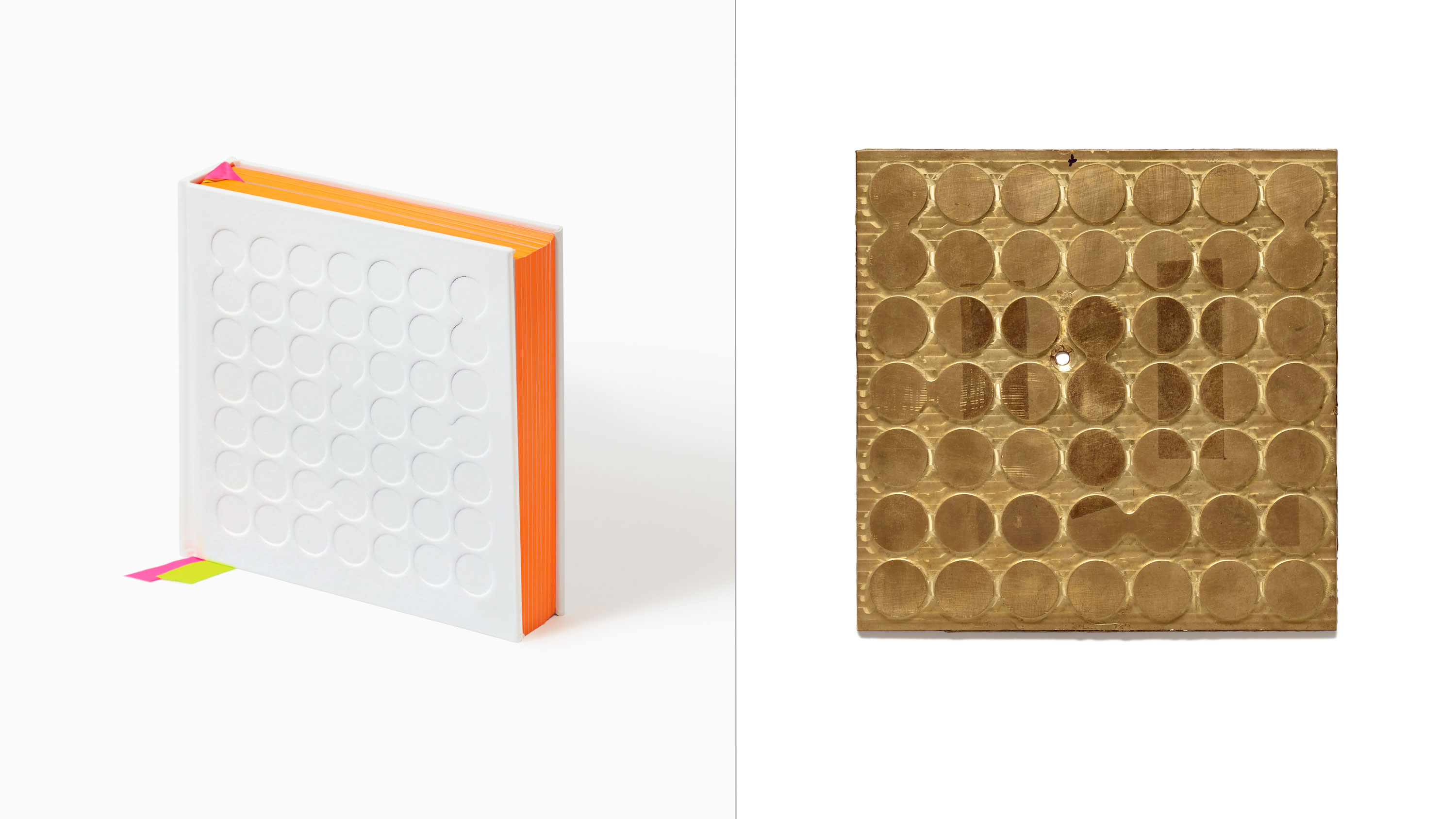News
One Book, Two Cover concepts
Prototyping the covers for Morla : Design.

Fans of print production and book cover design, you’ll love this: a behind-the-scenes look at prototyping two different covers for Letterform Archive’s second publication, Morla : Design, a monograph on contemporary designer Jennifer Morla.
To create two variations on the cover’s pattern, Morla experimented with vacuum-forming polycarbonate for the deluxe edition and debossing vegan leather for the regular edition. Read on to discover all the ins and outs of the process, and check out our Kickstarter campaign for more details on this all-around innovative project.
It all started with a pattern that Morla couldn’t let rest. Called “Mitosis,” Morla first designed this system of interlocking dots as two-dimensional art for a textiles client, but she always wanted to see it raised in 3D. “I’ve always liked dots and biology, and the idea of a cell dividing at that wonderful point where it’s not quite separated — it just has this tension that I thought was interesting as a graphic pattern,” she shares. “But as I drew it, I knew it would be even more successful as a three-dimensional form.”
“I’ve always liked dots and biology, and the idea of a cell dividing at that wonderful point where it’s not quite separated — it just has this tension that I thought was interesting as a graphic pattern.” — Jennifer Morla
Fast-forward a few years, and Morla got her chance with Morla : Design. To transform “Mitosis” from flat art into a sculptural emboss, she turned to a production technique that’s rare in the book world but ubiquitous in manufacturing: vacuum-forming.
Here’s how it works: A vacuum-forming machine is a double-decker apparatus, consisting of a lower surface where you place your mold and a heating unit above. (There are a few ways to make the mold, but today it’s very common to render the three-dimensional details of your artwork as a CAD file, then run it through a 3D printer or CNC mill.) Once the mold is trimmed and mounted on the bed of the vacuum-forming machine, you clamp a thin sheet of forming plastic below the machine’s heating unit and crank up the heat, noting how it makes the plastic sag and morph as it warms.
Once the plastic reaches 400 degrees Fahrenheit, you pull a lever to drop the sheet down over the mold and hit start on a vacuum pump encased in the lower deck. This pump pulls air from the mold via holes the size of pinpricks, sucking the plastic over the mold to create a perfect replica in instants.
You can see the pinprick holes along the seam in our mold below.

Morla is no newcomer to vacuum-forming, having first used the technique for a book commemorating Clorox’s 100th anniversary. “Growing up, the Clorox bottle was synonymous with laundry life”, Morla remembers. “Since it was so iconic, I said, ‘Let’s actually fabricate the white plastic of the bottle. Let’s actually make it the cover.’”
She was able to draw from that experience for Morla : Design, though not without the usual adventures in prototyping. “Working with polycarbonate has its pluses and minuses — you have to design a surface that will be strong enough to resist damage”, Morla says of this process. “The domes in the ‘Mitosis’ pattern are strong forms, but the plastic can get too thin at the top if the dome is too tall. On a few versions of the mold, we could nearly see through the plastic.” After multiple tests with her go-to collaborator for such production magic, Steve Cross of Colorbar, Morla arrived at an emboss mold that would do the trick.

With the cover for the deluxe edition of Morla : Design down, Morla moved onto the production effects for the regular edition, which features the same “Mitosis” pattern, just cleverly debossed in tactile vegan leather. “I like this material because it isn’t real leather”, she says. “But also because it gives such a touch and feel to that cover — there’s simply nothing else like it. It’s silky and smooth.”
“I like this material because it isn’t real leather, but also because it gives such a touch and feel to that cover — there’s simply nothing else like it. It’s silky and smooth.” — Jennifer Morla
Morla wanted a deep deboss to give the monochromatic cover a dimensional boost, so she and Steve Cross again teamed up to figure out the depth of the die stamp and the duration of press time. One critical aspect: the size of the die. “A 10-by-10-inch design calls for an unusually large deboss die”, Morla explains. “When the die is pressed down, the pressure must be equal in all corners. Otherwise, you get a variation — a lighter deboss on one side and a deeper deboss on the other. It’s harder to maintain even pressure with a larger die, especially one of repetitive circles. There’s nowhere to hide!”
You can see the final die for the debossed edition of Morla : Design below — complete with the hole used to mount it to the factory machine.

The production effects aren’t the only thing brave and bold about the cover designs for Morla : Design. It’s beyond rare to see an all-white book with no title on the front cover. In fact, the only text on the entire case is two words — Morla : Design — stamped small in blue holographic foil on the spine.
“I wanted the pattern to be the hero, and the title would have compromised that”, declares Morla, who is actually known for her expressive use of type. “But by vacuum-forming and debossing the pattern, and leaving type out of the equation, the book became an object. It is design, so I don’t need to label it with ‘design’ on the cover.”
This marvelously conceived and exquisitely crafted project from Letterform Archive is available for order on Kickstarter.
